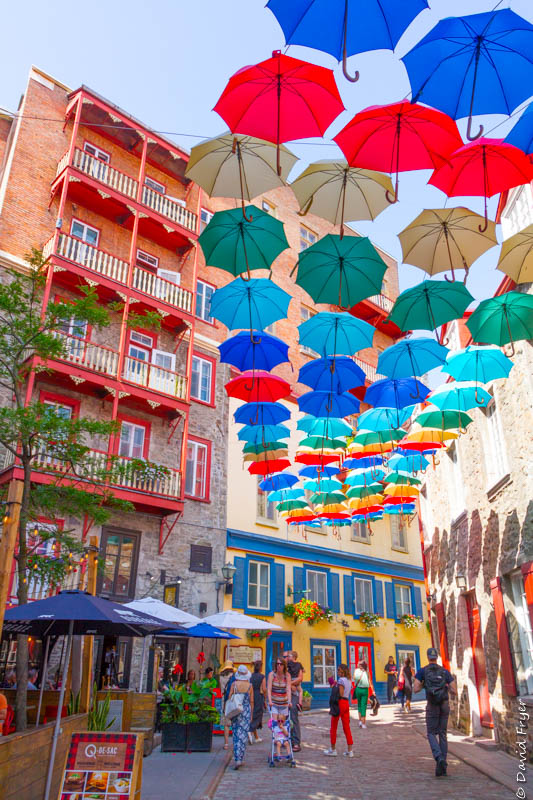
We haven’t posted in seemingly forever and the Bighorn has been parked in Portland, Oregon for a while now. We have decided to stay in the area, awaiting the birth of our first grandchild. During our fulltiming adventure we have not stayed in a cooler region for the winter so this will be a first for us. Having a house on wheels over the last few years has allowed us the good fortune to travel to warmer climes for the winter months. This winter will be different.

Enough of the winter talk, on our way out west from Atlantic Canada, we traveled through Quebec and stayed a few days near Quebec City. We stayed in an RV park that had a shuttle to the ferry into the city itself from the town of Levi.
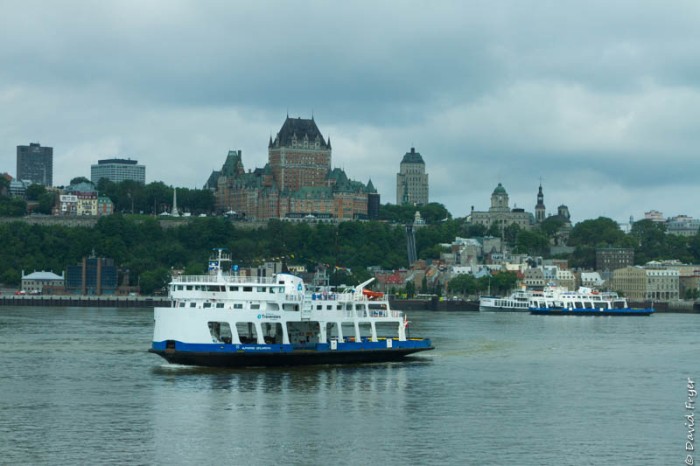
We would highly recommend putting Quebec City on your bucket list. It is beautiful, historic, and very easy to explore. The city’s very tall fortifications buttress the wide St. Lawrence River, creating an old world charm that is enchanting. The numerous walkways and steps invite the visitor to see what is just around the corner.

Given that Quebec City is the only fortified city north of Mexico, visiting it feels like a journey back in time. Your first sight from the Levis-Quebec City ferry is the famous Hotel Chateau Frontenac, surely one of the most photographed hotels in the world. The hotel was the vision of the Canadian Pacific Railway president, William Van Horne. The railway sought to promote luxury travel in the 1800s so he built a magnificent hotel to lure travelers there.

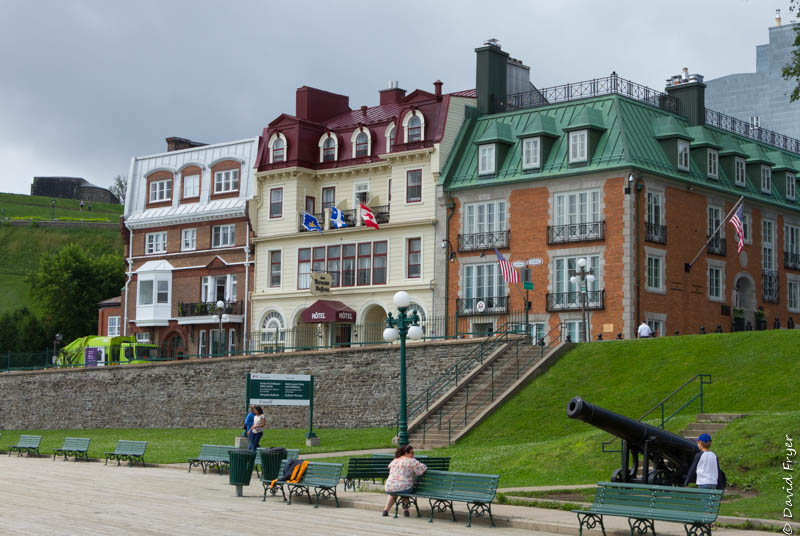

In front of the hotel is the expansive Dufferin Terrace. This half-mile-long boardwalk, overlooking the St. Lawrence River, has wonderful views in every direction.

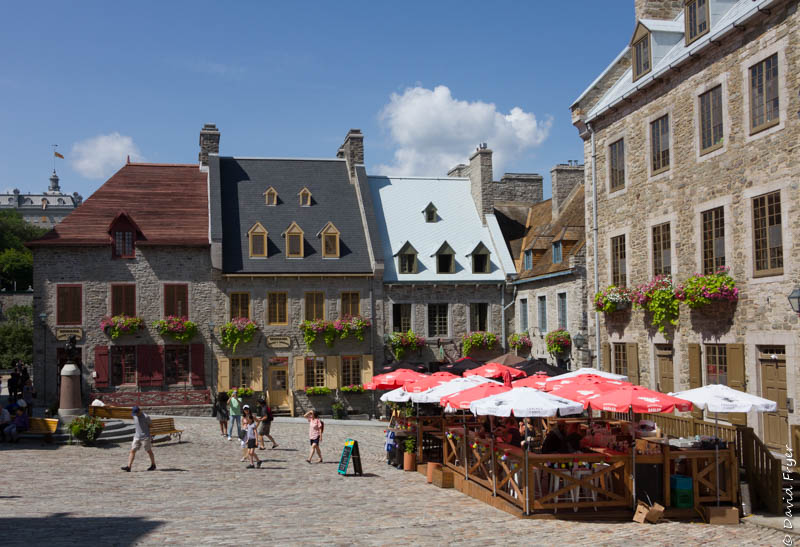

The city has maintained its old town with narrow cobblestone streets, flower-ladened windows, and numerous plazas. Quebec City was designated a UNESCO World Heritage site in 1985.

One of our first stops was to ride the funicular that takes you up to the “old town” from the river level. This ride up the hill has existed for over 100 years.
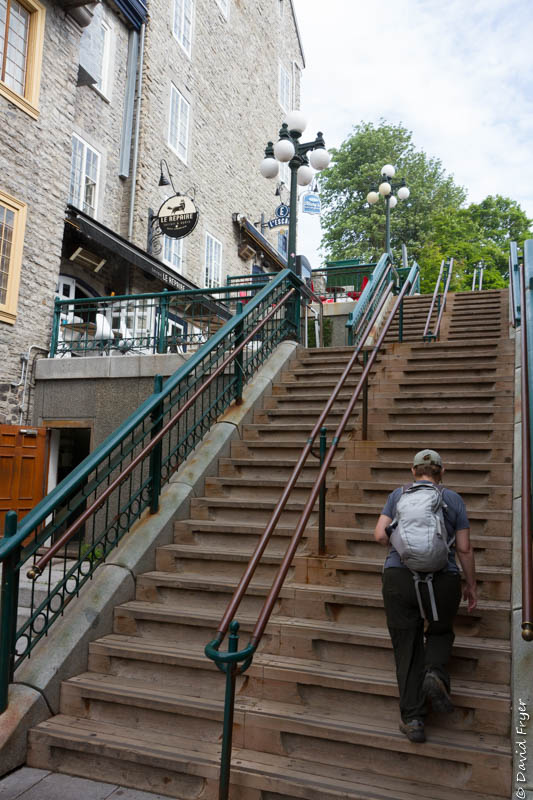
The alternative to the funicular is to take the “Breakneck Stairs” which starts at one of North America’s oldest commercial districts. Who needs a “stairmaster” when you can climb up the numerous steps in this beautiful city.

The Fresque des Quebecois tells the story of Quebec City.

Near the massive fresco is the Place Royal with the Norte-Dame-des-Victoires Catholic Church front and center. Construction started in 1687 and was completed in 1723 making it one of the oldest church buildings in North America.

The beautiful church has a ship suspended from the ceiling and was a first for us.
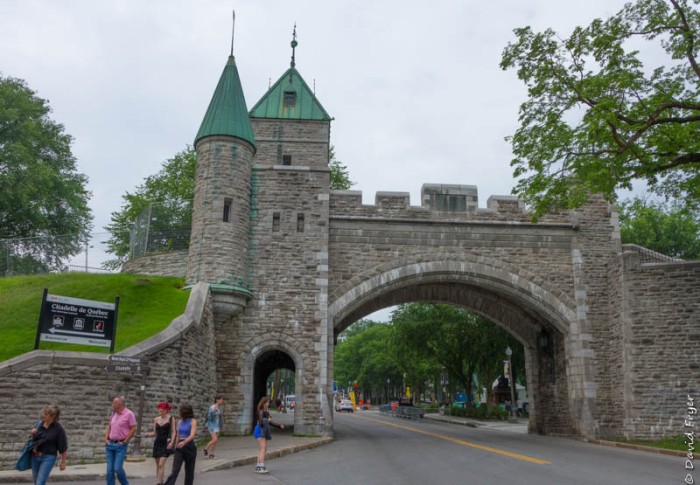
Another fascinating feature of the city is the four stone gates that are part of the historic fortifications. You no doubt will pass one of these if you visit the Citadel in the city.




The La Citadelle de Quebec sits atop the Cap Diamant overlooking the city and the river. This National Historic Site is also an active military installation. We decided to visit and we were lucky to tour the facility on an important day. The Royal 22e Regiment was installing a new commander and we were able to see some of the ceremony from a distance.
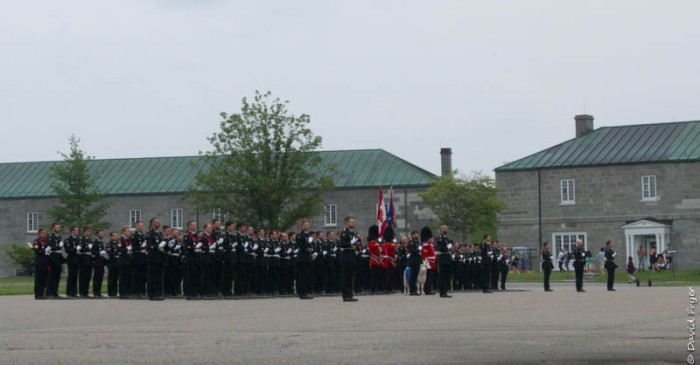
Can you spot the regiment’s goat mascot (Batisse XI)?

Because it is an active military base, guided tours are the only way that you can visit it. Our English speaking guide was wonderful and obviously proud of the regiment that is based there. Formed over 100 years ago, the regiment was a result of the demand for a French speaking force within the Canadian army.

The Citadel is perched atop the high walls of Cap Diamant which was recognized for its military importance as early as 1608 by Samuel de Champlain. The modern citadel was built from 1820-1850 after various fortifications were constructed in previous years. The improvements were not to protect Quebec from the French but from the Americans.

There are several museums at the Citadel. One is located in a restored powder magazine.

Part of our visit included exploring some of the underground passageways.

The slogan “Je me Soviens” (I remember) is prominently displayed in the citadel and on all vehicle license plates in the province. It was explained to us that for the regiment it has a special meaning of remembering those who have made the greatest sacrifices for their country.
Walking around the old town is perhaps the main attraction.

A short walk from the Citadel is the Parliament Building.

One of the most famous historic sites is the Cathedral Notre-Dame de Quebec (1647). In 1164, it became the first parochial church north of Mexico. During the British siege of 1759 it was bombed and burned but was rebuilt using the original plans.


The interior is beautiful to behold and has so many features to view. One especially interesting feature is called a baldachin. Hanging over the chancel it appears to float.

One of the oldest houses in the city, dating from 1675, is now a restaurant.
There are so many wonderful street scenes:
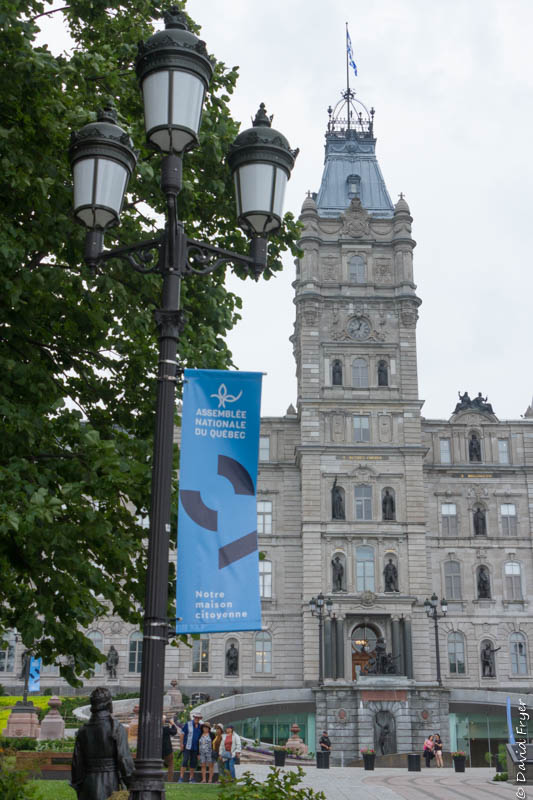






This was not part of our original plan but we were both delighted that we ventured this way. This was a bucket list item checked, that wasn’t even on the list! This was a serendipitous detour that could not have been more fun.
Next we set sails for the west coast but have a bump in the road in Rochester, NY.

Loved the photos and write up!
Cindy modzelewski
LikeLiked by 1 person
Thanks!
LikeLike
Wonderful photos! I hope to visit there someday.
LikeLiked by 1 person
Thanks! I hope you are able to.
LikeLike